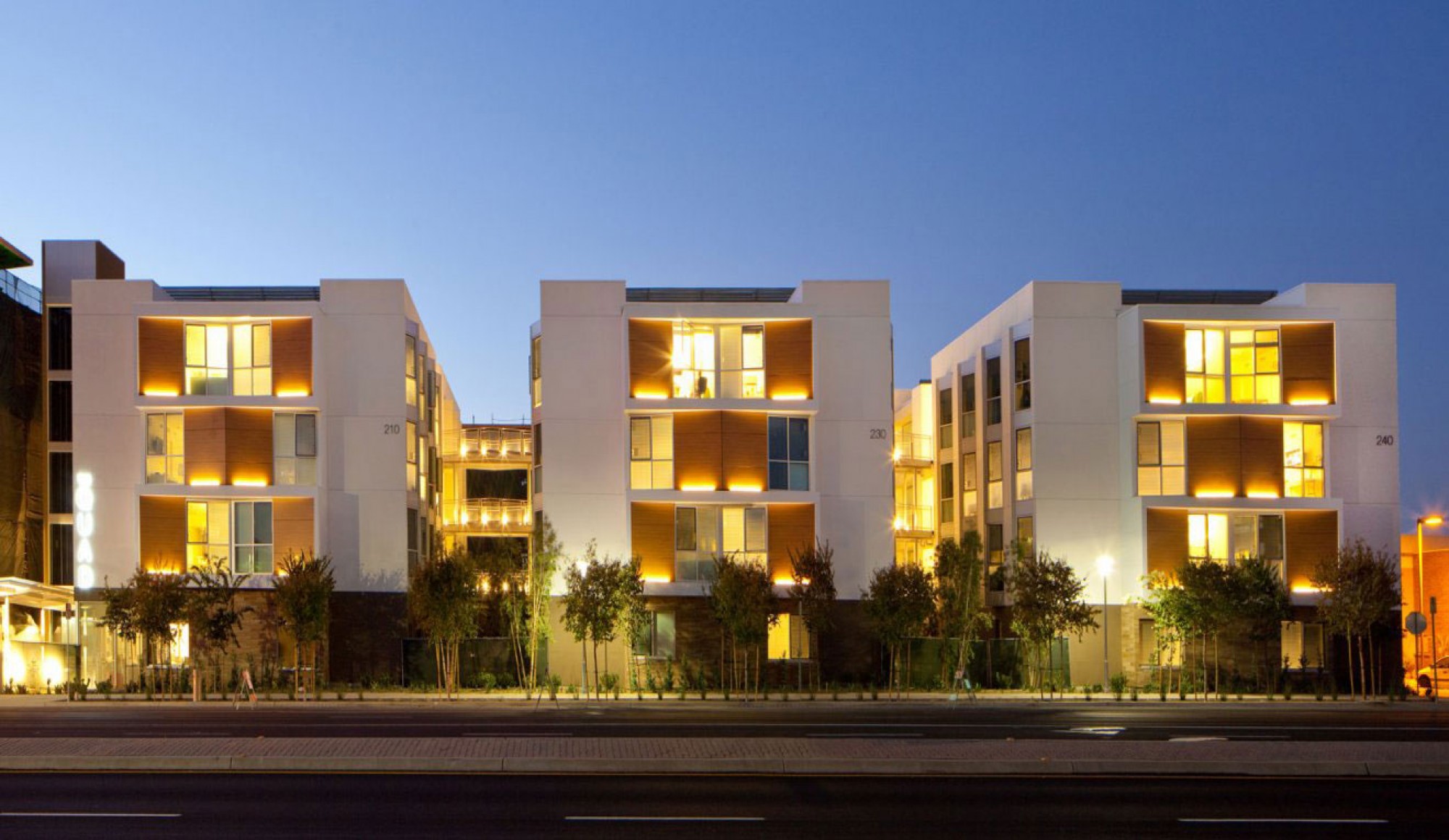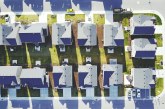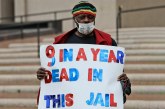
For much of the last year, the big issue debated has been regarding the UC Davis Long Range Development Plan (LRDP). Driving that concern has been the rise of student enrollment at UC Davis and the projected increase thereof, while the university has failed to keep up with housing on campus.
For many years now, we have known that housing in town has been problematic and, indeed, the BAE Urban Economics survey, for a second year in a row, shows that the apartment vacancy rate for 2016 was 0.2 percent, the same as 2015. The rate for 2014 was 0.3 percent.
That means for all apartments surveyed – 8105 in total – there were only 15 vacancies.

As they explain in their methodology, BAE received responses from 142 unique apartment complexes, representing a total of 9969 rental units, which is a small decline from the previous year.
They write, “Estimates from the American Community Survey (ACS) indicate that there were approximately 11,953 multifamily housing units, on average, on the UC Davis campus and in the City of Davis, between 2011 and 2015. This suggests that the units captured in the 2016 survey account for around 83 percent of the total multifamily housing stock in the Davis community.”
They also note that the increasing dynamic in the rental housing market “is the practice of renting out units under multiple lease agreements. Under this type of arrangement, known as a ‘bed lease,’ each bed, or bedroom, in an apartment is associated with a separate lease agreement. Each resident is, thereby, contractually responsible for only a portion of the total rent. This is compared to the more conventional approach, wherein each unit is rented under a single master lease and all of the tenants living in the unit are jointly responsible for the complete monthly rent.”
However, even with the growing phenomenon, “only 11 percent, around 950 units in total, were reportedly rented under bed lease arrangements.”
Where does this leave us?
In this year’s Rental Resources Ordinance, the city council declared “that the City’s rental housing market is greatly impacted by a reduced vacancy rate, which may increase the likelihood that tenants fail to complain about or report unsafe or unsanitary conditions due to a fear of losing their homes.”
In addition to driving up rental costs, the city believes that there are substandard dwelling units that may include dangerous physical conditions.
Councilmember Lucas Frerichs said earlier this year, “We think it’s quite likely … that because of the (rental) vacancy rate ostensibly being 0 percent, if a tenant is having an issue, they’re not going to complain about it for fear of losing their housing.”
That is an important impact. It is one that has led the city and also citizens to push UC Davis to put more housing on campus.
The university, under pressure last spring, agreed to increase the percentage of new students housed on campus to 90 percent, while committing to housing 40 percent of all students on campus. That was not sufficient for the city council.
In a letter to the university, the council requested “UC Davis provide for a minimum of 100 percent of the projected enrollment of all new incoming students starting with the 2017 academic year and at least 50 percent of total UC Davis campus student population in the LRDP. The City further requests that UC Davis develop an accompanying construction and financing implementation strategy to ensure the delivery of these units and facilities in a timely manner.”
To date, the university has not accommodated that request. Bob Segar reasoned that 90 percent of new students was, in effect, a commitment to take in 100 percent of all local housing for new students, reasoning that a residual of 10 percent would always live in Sacramento and outside of the local housing market.
The city responded, “While the City understands the campus perspective in putting forward the current ’90/40′ LRDP housing proposal, the City must evaluate it in the context of our commitment to provide for the full range of community housing needs. With the City’s continuous consideration of proposals to meet the wide range of community housing needs, it is crucial to recognize that the role of the City in the provision of housing fundamentally differs from that of the University.”
At the same time, the city said it “remains committed to doing its part to provide for the full and diverse breadth of housing needs in our community.”
These include housing that has already been approved: “The Cannery, Grande, Chiles Ranch, Villages at Willowcreek, Paso Fino, Mission Residences, Berry Bridge, and Del Rio Place projects are all currently under construction.”
The city is also looking at high-density housing like Sterling and Lincoln40, which represent over 1150 dwelling units.
A wild card is what happens with Nishi – voted down last June by the voters, it would have provided 1500 units of, potentially, student housing.
The council says it “remains committed to working with the property owner and UC Davis to determine the future possibilities for the Nishi site.” They in fact pushed UC Davis to allow the possible consideration of grade-separated access to the Nishi site.
The city’s approach to the low vacancy rate is threefold – first they wish to protect the rights of the current renters, second they have pushed the university to expand on-campus housing numbers, and finally they are looking into housing within two miles of campus.
To date, none of those efforts have reduced the long-standing rental housing crunch in Davis.
—David M. Greenwald reporting






The City’s approach is threefold – first to wring their hands in faux concern about the fate of renters, second, blame someone else for the City’s past failures, and finally, talk about the need to do something, someday…maybe (but only if it doesn’t harm existing landlords or cause the change-averse to get sweaty palms).
It isn’t necessary for all rental housing to be within two miles of campus. There are lots of renters in Davis who aren’t students.
Last sentence is important, and could easily be expanded to “not students, nor affiliated with UCD.”
This is about rental housing, particularly MF: student, faculty/staff, other local employees, and others.
The apartment shortage is a problem that could have been solved by the City at any time in the past four decades. The reality is that the City Councils have not wanted to address the problem because the voting majority in Davis has, for decades, made the active decision not to solve it. Until that changes, we will continue to wring our hands, blame others for our fate, and talk incessantly about the need to find solutions. The one thing that we won’t do, and the only thing that will actually make a difference, is act. We are a town that loves to talk about our problems, not one that elects to solve them.
So you don’t think the council will approve the apartment complex proposals?
UCD under delivered housing from its last 10 year Long Range Development Plan by thousands of rooms, and even relying on turning doubles into triples and singles into doubles did not make up the gap. On top of that, part way through the ten year plan, UCD accelerated enrollment with its controversial 2020 plan aiming to bring in an additional 5,000 students. That lack of construction on campus coupled with accelerated enrollment growth is the primary cause of the current Davis housing crunch, although it is very important to note that this is a regional issue and the housing market is tight (although not as tight) in other cities in the region too.
The fact that there haven’t been apartments built in Davis in nearly two decades is a factor in the current Davis housing crunch as well. Certainly UCD is the bigger issue, but it has never been expected that UCD would provide housing for 100% of their enrollment growth. There is internal growth pressure as well.
UCD needs to build more housing on campus, and we need some more apartments in town.
Even if UC provides 100/50, we still need more rental housing in town, imo.
There hasn’t been a healthy apartment market in Davis for the better part of 40 years, due to the City’s development policies. This shortage was created by the City and is the City’s responsibility to solve. Blaming the University is simply dishonest.
There are some problems with that argument Mark.
First, UCD has the lowest or second lowest percentage of housing on campus of the UCs.
Second, Davis houses a high number of students in town – much higher than a lot of other UCs.
So I don’t think this can be put all on the city of Davis.
So what? Every situation is different so the comparison is simplistic at best.
Again, so what? Housing people is the primary job of Cities, and not that of Universities. Davis has plenty of room for more apartments, something that cannot be said for most of the other host cities of the University of California campuses. The bigger issue, however, is that the demand for apartments extends well beyond students so anything the University does will only address a portion of our shortage. Davis needs to build more apartments regardless of what the University does, so you (and many others) need to stop making bogus excuses for our not doing so.
The city can’t compel anyone to build apartments unless the developer is seeking a discretionary entitlement, and the city’s leverage in that instance is limited. If the only proposals that come to the city are for single-family McMansions with a bit of okay-if-you-insist multi-family hidden in a corner, the fiscal and environmental problems that go along with approval may not be worth the few apartments gained.
The market has to be ripe for apartment projects to have development appeal; the city saying “Build apartments!” isn’t going to do it. As evidenced by the Nishi, Lincoln 40 and Sterling proposals, we appear to be there now.
On a single project basis, you are right, the City can only respond to the projects brought forward by the developers. What the City could have done however was to make land use and zoning decisions that favored high-density multifamily housing, which would have influenced the projects being proposed. South Davis, Mace Ranch, Wildhorse, and Cannery could all have included significantly more high-density multifamily housing if the City had made that a priority. So the fact remains, that the City could have solved the apartment shortage long ago but chose not to do so.
Jim–Your PhD in Real Estate or City Planning is from where? And could you provide some citations, please. Most in need of a peer-reviewed and empirically robust citation is the claim “the fiscal and environmental problems that go along with approval may not be worth the few apartments gained.” Have you actually gathered any VMT data on apartment dwellers?
UCD has been the primary source of the problem by not providing the on-campus housing needed by its own students for years. UCD has pushed its housing needs onto Davis and surrounding communities and creating the significant impacts on the rental housing to all of these communities. UCD’s inaction has been incredibly irresponsible. UCD needs to resolve the problem that they are responsible for by providing far more on-campus housing, as other UC’s are providing their students, to alleviate the impacts that UCD is imposing on their own students, and on Davis, and on surrounding communities.
The only long term solution is for UCD to provide far more on-campus housing than they have proposed in their LRDP for the sake of their students, Davis, and the other surrounding communities. Since the other UC’s are providing at least 50% on-campus housing there is no excuse why UCD can not provide the same, particularly since UCD has over 5,300 acres. UCD is the largest UC, yet historically has provided the least amount of on-campus housing. There is also no excuse for this when UCD has access to more than $1 Billion in funding, yet they prioritized building a new art museum, another music recital center, and now apparently doing a major reconstruction of Freeborn Hall to become a convention center. UCD needs to prioritize the housing needs of its students now.